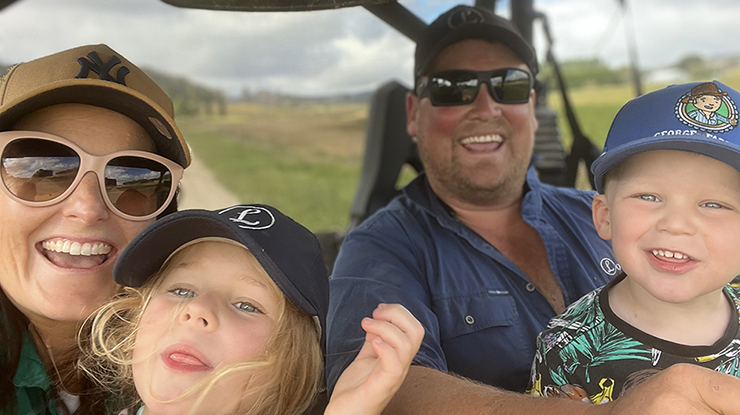 Michael Shannon and his family.
Michael Shannon and his family.
Bushfire preparation is essential to recovery
With the effects of devastating bushfires in 2019–20 still being felt at his southern NSW enterprise, sheep and cattle producer Michael Shannon is taking steps to avoid future fires.
While Michael was fortunate not to lose any of his sheep or cattle on his Cathcart property, three years after the Black Summer bushfires, he’s still mending fences.
“A bushfire preparation plan is so essential to recovery,” he said.
“We had warning the fire was coming and we still got burnt, so I don’t like to think how much worse it could have been if we hadn’t been prepared.”
Fire preparation
Michael’s on-farm preparation plan when the 2019–20 bushfire was heading towards his property consisted of what he considered most important: water.
“Things were dry, and it was really windy – it was the perfect culmination of ingredients to create a hell of a wildfire and we hadn’t taken the opportunity to protect our land with back-burning,” Michael said.
“Despite the fact we’ve always been considered a high fire risk zone, we’ve never been burned before so a strong bushfire plan was never a part of our farming practice.
“In a last-minute attempt to protect ourselves from the oncoming fire, we loaded large water tanks and cleaned out chemical pods on the back of our utes.
“We joined them all together, filled them with water and attached a cheap pump at the end to ensure it was easily accessible – it’s what saved my livestock.”
Michael then hit the phones, requesting backup on-farm to help defend his livestock and land.
“I was fortunate to have lots of friends and family around me who I was able to call on to help if things got too hard for me to control on my own – which ended up being our saving grace.
“It's incredible how important it was in that time to have all that gear and help there because the Rural Fire Service can’t be everywhere at once and during the heat of it all.”
Fire-ready infrastructure
Michael said good bushfire preparation coincides with fire-ready infrastructure.
“The biggest thing I felt would have made a difference to our recovery was better fencing – not just steel posting, but wider gates for tree clearing machinery and large fire water trucks to get through,” Michael said.
“Our gates were approximately 3m wide but they needed to be a minimum of 5m with the size of machinery we had coming through to douse the fires and clear trees – we ended up losing a lot of infrastructure due to access limitations.”
In addition to wider gates and steel fencing, Michael recommends producers prepare a map of access points, so attending services don’t have to cut fences to access your property.
As well as good infrastructure, Michael has added the following activities to his preparation plan for the upcoming bushfire season:
- burning off dry areas when the weather permits
- monitoring pastures to ensure grass remains green and short
- drawing up maps of water access points
- ensuring hoses are where they belong at all times
- ensuring pumps, water tanks and pipes are in good condition and working order
- stocking up personal protective equipment kits (masks, goggles and fireproof gloves)
- planting trees which are at a lower risk of burning (such as oak trees) to ensure livestock have shelter available post-fire.
“Having not only a plan, but a plan that’s been effectively organised and already in place, is key to protecting your property during a bushfire,” Michael said.
“Those little jobs only take minutes to do but are so effective in the long term – especially in terms of recovering. “It is so important for us producers to remember that good bushfire preparation doesn’t just benefit ourselves, it benefits our neighbours and community who are likely to be affected as well.”



